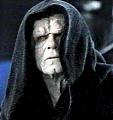Thanks Norfolk!
A brief preface, Frans Osinga has agreed to participate in the Science, Strategy and War symposium and give a rebuttal/author's reply and generally discuss with the reviewers and readers.
Wilf Owen wrote:
I've looked at quite a few MRI scans taken in neuroscience and neurolearning. As a layman, the argument that the brain consists of interdependent "modules" capable of simultaneous and asynchronous processing seems to me to be credible enough to at least warrant sustained scientific investigation.I would dispute that assertion. Boyd may have described a process that sometimes occurs (like flatulence!). That is not to say that it forms the basis for anything useful in military thought or science.
Boyd's OODA diagram represents (as I interpret it) a model of a dynamic mental process where multiple cognitive events are happening ( I'd say simultaneously in many instances). Does Boyd's model match what the brain is really doing ? Too early to say with certainty. Does the OODA Loop have any military utility? That depends on the context.
Having spent now spent over fifteen years working with students ranging from young children to adults, I can't say that I have ever come across one who understood or had awareness of their own decision-making process prior to being prompted to begin an introspective process of self-observation. Selil brought up metacognition. While metacognition does happen spontaneously and briefly, doing so perceptively and efficiently is really more of an acquired skill gained from sustained practice.I have talked to at least three behavioural scientists and psychologists, who have all told me that even Boyd's most detailed OODA does not describe a decision making process that user awareness would enhance.
Take the "orientation" box for example. Self-awareness of the intellectual-cultural origins of one's own worldview, the limitations, strengths and blind spots is a critical bit of knowledge for being able to take active steps remediate one's own weaknesses. Or as a stepping stone to understanding alternate worldviews or perspectives - like those held by an adversary.
Now, at that level, who is OODA most useful for? Probably statesmen integrating DIME for making national strategy and foreign policy decisions, intel analysts and theater commanders. There are other ways to interpret this model. But what level of conflict is being discussed ? Few things or aspects of things are equally useful at all points on a continuum.
I would argue that OODA is foremost an individual psychological process. Collective OODA comes later and it is heavily mediated by social structure. Hierarchies, networks, markets all move information differently from one another.The OODA loop assumes rational collective human decisions under stress. Humans don't work like that
Faster ain't always better. I realize that OODA has been primarily taught or proselytized ( NCW advocates for example) as yielding a comparative advantage in speed and the U.S. military should shoot for speed uber alles. Well, did Boyd actually say that was the only advantage? I'm not sure that was the case but I'm open to correction.EG- Someone learning to play chess could be said to be using an OODA loop. How does knowing that help, or speed their decision making process. If they can't see the other sides pieces, (as in conflict) how does understanding of OODA aid them?
OODA, in the sense of focusing on the opponent's decision process, would certainly influence a commander or planner ( or chess player) into what pieces they might intentionally permit the adversary to see. Patton's fake army in England prior to D-Day, for example
You can't. The best outcome is relative congruence, IMHO.How do you ensure all your command staff are using the same OODA loop?







Bookmarks